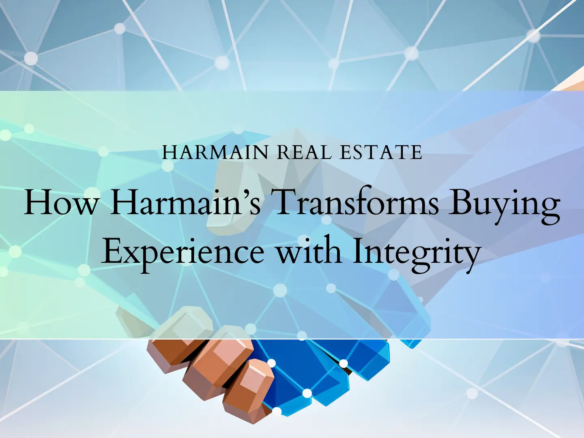Imagine a world where your home or office isn’t just a structure but a smart asset working to save you money and protect the environment. As energy costs in Pakistan continue to rise, the concept of energy-efficient buildings is no longer a luxury—it’s a necessity. These structures are expertly designed to minimize energy waste, offering significant economic savings, a smaller environmental footprint, and a superior quality of life.
But what exactly makes a building energy-efficient? And how can these modern design principles be implemented across Pakistan’s diverse urban and rural landscapes? This guide explores the tangible benefits of energy-efficient buildings and provides practical strategies to bring these sustainable spaces to life.
What Makes a Building Energy-Efficient? Key Design Principles
Modern sustainable design focuses on integrating smart technology, advanced materials, and strategic planning to reduce a building’s environmental impact. At its core, an energy-efficient building optimizes its energy usage through intelligent design and automated systems. Features like smart HVAC systems, LED lighting, and efficient water management drastically lower its carbon footprint and operational costs.
Furthermore, the integration of renewable energy solutions like solar panels is a hallmark of modern construction, allowing buildings to generate their own power and move towards net-zero energy consumption. Key strategies include:
- Passive Design: Maximizing the use of natural light and ventilation through smart orientation and window placement to reduce reliance on artificial lighting and cooling.
- Energy Monitoring Systems: Using IoT-based sensors and dashboards to track and control energy consumption in real-time.
- Green Roofs & Walls: Installing vegetation on roofs and walls to improve insulation, manage stormwater, and enhance air quality.
| Feature | Benefit |
| Smart Thermostat | Optimized temperature control, reducing energy waste from heating and cooling. |
| LED Lighting | Consumes up to 75% less energy and lasts significantly longer than traditional bulbs. |
| Solar Panels | Decreases reliance on the national grid, generating clean energy and lowering electricity bills. |
Are you planning a new construction project? Contact Harmains today to discuss incorporating these smart design principles from the ground up.
Core Technologies in Energy-Efficient Buildings
Technological advancements have made achieving energy efficiency more accessible than ever. Smart technologies are at the forefront, revolutionizing how buildings operate. Key innovations include:
- Adaptive HVAC Systems: These systems use sensors to adjust heating and cooling based on occupancy and outdoor climate, preventing energy waste in empty rooms.
- Advanced Window Glazing: Double or triple-glazed windows with special coatings (Low-E) regulate indoor temperature by reflecting heat.
- High-Performance Insulation: Using superior insulation materials in walls, roofs, and floors to maintain a stable indoor temperature, reducing the load on heating and cooling systems.
Beyond smart devices, innovation in construction materials has also been a game-changer. Sustainable materials like reflective roofing, high-thermal-resistance concrete, and recycled steel offer better thermal regulation and a reduced carbon footprint.
| Technology | Impact on Efficiency |
| IoT Sensors | Minimized energy wastage through real-time data and automation. |
| Dynamic Glass | Optimized daylight use by adjusting tint electronically. |
| Smart HVAC | Personalized and efficient temperature control zone-by-zone. |
How to Implement Energy Efficiency in Your Building Project
Achieving green building goals requires a blend of strategic planning and practical measures.
First, focus on the design phase. Use energy simulation tools to understand how orientation, window placement, and material choices will impact long-term energy performance. Proper insulation is non-negotiable, as it minimizes heat gain in summer and heat loss in winter.
Next, adopt renewable energy. Installing solar panels is one of the most effective ways to generate clean energy on-site and reduce your electricity bills. Complement this with energy-efficient appliances, such as LED lights and high-efficiency HVAC systems. Water-saving technologies like low-flow fixtures and rainwater harvesting systems also contribute to overall sustainability.
Finally, install an energy monitoring system to track usage and identify areas for improvement, ensuring your building operates at peak efficiency for years to come.
| Technology | Benefit for Your Building |
| Solar Panels | Generates renewable electricity, providing long-term savings. |
| LED Lighting | Uses up to 75% less energy, lowering operational costs. |
| Water Harvesting Systems | Reduces municipal water consumption and related utility costs. |
| Energy Monitoring | Identifies inefficiencies, allowing for continuous improvement. |
Ready to upgrade your existing property or start a new project? Get a personalized quote from Harmains for energy-efficient solutions.
The Long-Term Financial and Environmental Benefits
Investing in energy-efficient buildings creates a positive ripple effect for generations. These practices lead to more resilient infrastructure and reduce dependence on an already strained national power grid. By adopting these strategies, property owners contribute to healthier living environments, minimize urban heat islands, and improve air quality.
This transition encourages sustainable urban development without sacrificing modern comfort or functionality.
- Cost Savings: Lower utility bills from reduced electricity and water consumption provide a significant return on investment.
- Economic Growth: Boosts job creation in Pakistan’s green construction and technology sectors.
- Enhanced Livability: Creates healthier and more comfortable indoor environments for occupants.
| Aspect | Long-Term Impact |
| Energy Consumption | Reduced by 30-50% over the building’s lifespan. |
| CO2 Emissions | A significant decline, contributing to national climate goals. |
| Property Value | Increased market value and appeal to tenants and buyers. |
Frequently Asked Questions (FAQ)
Q1: What is the main characteristic of an energy-efficient building? An energy-efficient building is designed to minimize energy consumption for heating, cooling, lighting, and appliances while maintaining optimal comfort. This is achieved through a combination of superior insulation, high-performance windows, efficient HVAC systems, and often, on-site renewable energy generation like solar panels.
Q2: Why should I invest in an energy-efficient building in Pakistan? Investing in energy-efficient buildings offers three key advantages: environmental, economic, and social. They reduce greenhouse gas emissions, provide substantial savings on utility bills, and increase your property’s market value. By lowering energy demand, these buildings also reduce strain on Pakistan’s power grid.
Q3: How do these buildings improve daily life for occupants? They provide superior comfort and a healthier living environment. Better insulation ensures stable indoor temperatures throughout the year. Advanced ventilation systems improve indoor air quality by reducing allergens and pollutants, creating a more pleasant and productive space.
Q4: Can I make my existing building more energy-efficient? Absolutely. Retrofitting older buildings is a common practice. It can start with an energy audit to identify key weaknesses. Common upgrades include switching to LED lighting, sealing air leaks, improving insulation, and installing energy-efficient windows or modern HVAC systems.
Q5: Are energy-efficient buildings more expensive to construct? While the initial construction cost for energy-efficient buildings can be slightly higher than for conventional ones, the long-term savings are substantial. Reduced utility bills, lower maintenance costs, and potential government incentives often result in a quick return on the initial investment. Harmains can provide a detailed cost analysis in PKR for your specific project.
Conclusion
As we face modern environmental and economic challenges, energy-efficient buildings stand as a powerful solution. They represent a commitment to a future where progress and preservation go hand in hand. By embracing these principles, we can build healthier communities, reduce operational costs, and create a more sustainable Pakistan.
The buildings we construct today will define our landscape for decades. Let’s ensure they reflect a smart, sustainable, and prosperous vision for the future.
Ready to build a property that’s both cost-effective and environmentally friendly? Contact the experts at Harmains to lead your next construction project.





Join The Discussion